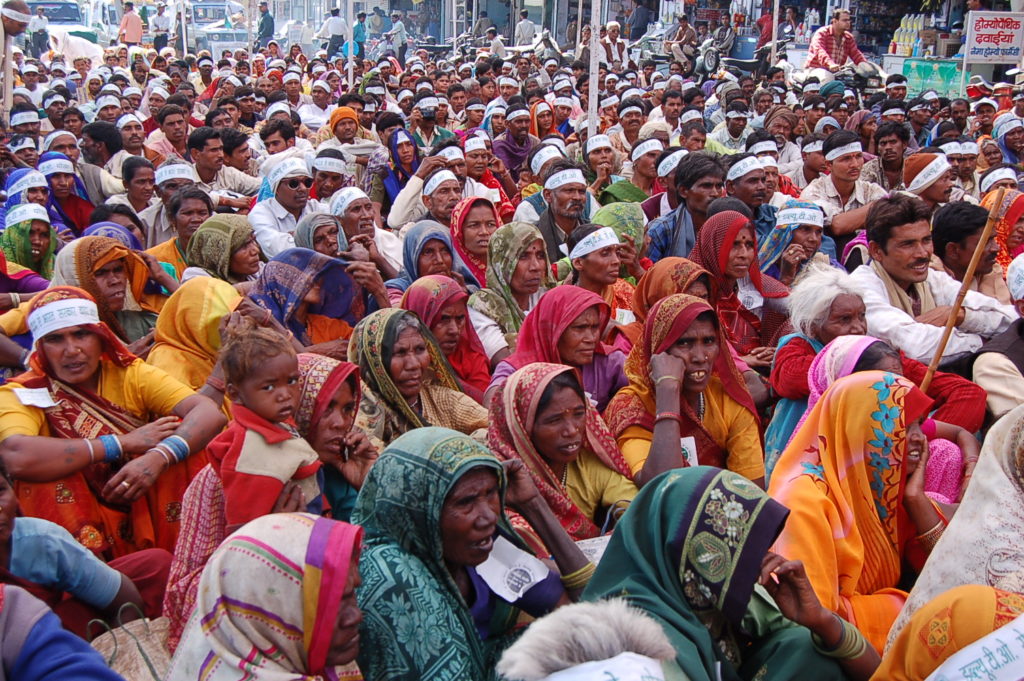By Shriya Tandon

Lyndon B. Johnson said, “You do not take a person who, for years, has been hobbled by chains and liberate him; bring him up to the starting line of a race and then say, ‘you are free to compete with all the others,’ and still justly believe that you have been completely fair. Thus, it is not enough to just open the gates of opportunity. All our citizens must have the ability to walk through those gates…” None could have stated in clearer terms the intention behind adopting the approach of affirmative action. The policy of affirmative action, as many are already aware, targets specific groups with the aim of redressing structural inequalities of the past by redistributing goods, making concessions, relocating resources, et cetera. It invokes ideas of fairness and justice by being backward and forward-looking simultaneously. And with India harboring the sizeable number of suppressed classes that it does, it comes as no surprise that Indian affirmative action is by far one of the most comprehensive worldwide.

However, the blatant politicization of this policy and its use as a measure of appeasing voters has evidently made a joke out of the intention with which it was brought about. The policy fails as a form of remedy for past injustice, chiefly because it does not address the problem at its root. We are all aware the role that the institution of ‘family’ plays in birthing and sustaining every form of wrongful discrimination we witness today by a variety of traditions and customs, however, the policy only treats discrimination at instances much later in one’s life, when such behavior has already been internalised. This leads to the perpetuation and politicisation of this policy for years on end. Critics of the policy point out that the social costs of affirmative action are often neglected – such policies are wrong-headed and they perpetuate and worsen the differences that already exist, with the relatively dominant members of the target group generally cornering benefits of the same. These ‘temporary measures’ tend to get increasingly politicised, and therefore not only persist for a longer period of time, but also expand in scope. As Ashok Acharya put it, “The politics of affirmative action overtakes its philosophy.” In such a scenario, this strategy is reduced to the standing of an electoral incentive. The outcome of this is incredibly unfavorable because the society undergoes a heightened group polarization and the people not benefiting react adversely to gain political attention; violence becomes an indirect outcome of the policy without any act of aggravation on the part of the beneficiary group.
It is no secret that the ground reality of this policy has massive discrepancies with the purpose it was ‘meant’ to serve and this can be attributed to a number of factors; the biggest of them being that putting a social group at a disadvantage and making them feel inferior has become an integral part of our socialisation process. The mere possibility of one community being able to dominate the other makes people want to execute it. Even perfectly capable people are made to psychologically feel that they are inferior and must work to the convenience of the ‘upper class’. Much sooner than later this becomes a fact rather than a manipulation of reality, and people begin to believe that is just how things were meant to be. But, another issue with reservations is that because of the maltreatment of the backward class from the people in the general category and the political attention that the target group receives, the beneficiaries want to continue taking advantage of the system. Despite having accrued immense benefits over time, they continue to abuse the very system invented to help them prosper, preventing the needy from getting at a position of advantage.

Nobody is saying that such policies of positive discrimination have to go, they don’t. People question its validity and importance in a day and time when it has become highly politicised, but because the ill effects of wrongful discrimination are so deeply embedded in the social and cultural views of minorities and majorities, we cannot do away with the affirmative action just yet. Change has its own pace and the structural inequalities that the centuries-long discrimination has produced, cannot be eliminated over a few generations. However, we also know that currently affirmative action is simply being used for vote bank politics, and that measure is doing more harm than good. The proponents of such a strategy would not want it to only be justified on morally compelling grounds, therefore, the approach needs to bring genuine change in the lives of people who need it the most. The policy undeniably needs strict guidelines for making sure the creamy layer of the target groups does not invariably monopolize the gains. Additionally, and more importantly, steps have to be taken in the direction of making citizens conscious of why such actions are required and how they say nothing about the beneficiary’s social standing. Other than fostering diversity, introducing new perspectives, experiences, and views, affirmative action helps non-beneficiaries in a multiplicity of other ways, too; they simply have to embrace these returns with an open and unbiased mind.
Shriya is a student of Political Science from Lady Shri Ram College for Women. Her interests include writing, reading, cooking and watching movies. Presently she is in the process of authoring her first book.


Informative. I would have loved to read simpler language as far larger an audience may be benefited, who are not exposed to complicated vocabulary
Make sense. Well written